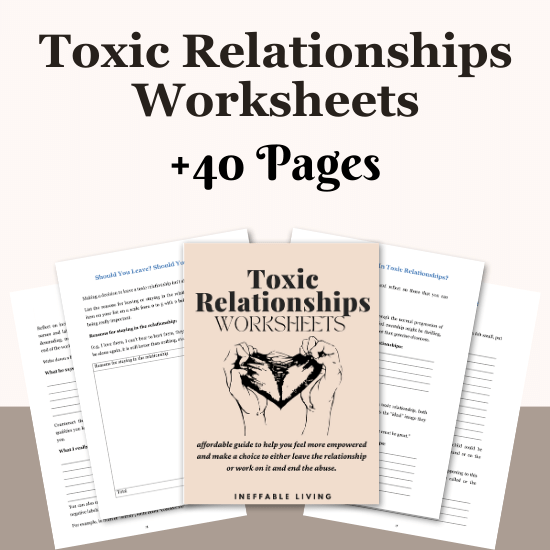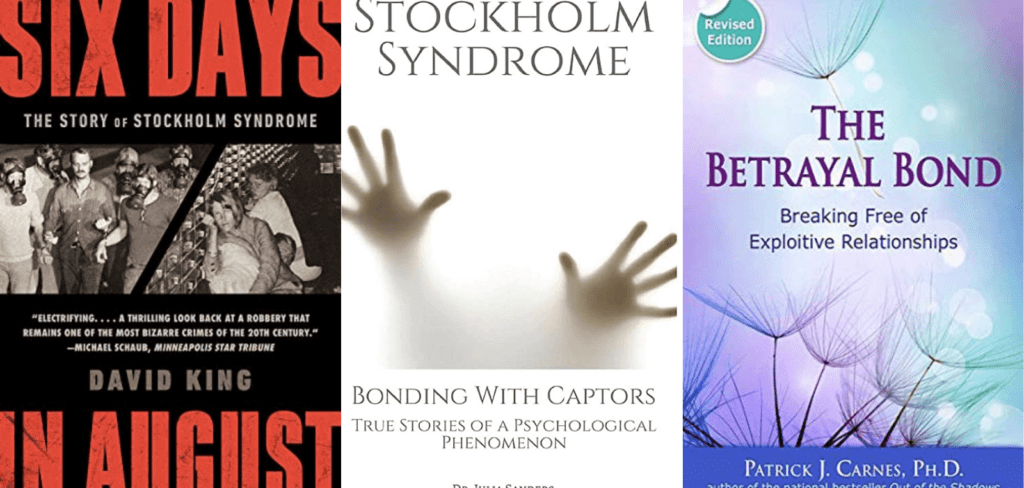This post contains top trauma bond withdrawal symptoms along with helpful tips to relieve them.
What Is Trauma Bond?
A trauma bond, also known as a traumatic bond or Stockholm Syndrome, refers to an intense emotional attachment that forms between an individual and an abusive or harmful person or situation.
This bond develops as a result of prolonged exposure to traumatic experiences, such as physical or emotional abuse, captivity, or manipulation.
Trauma bonds can occur in various contexts, including abusive relationships, hostage situations, cults, or childhood trauma.
They often manifest as a complex mix of positive and negative feelings towards the abuser, leading to a significant psychological and emotional impact on the individual.
Key Characteristics of Trauma Bonds:
1. Dependency: Individuals may become emotionally dependent on their abusers, seeking validation, approval, or a sense of belonging from them despite the harm caused.
2. Intermittent Reinforcement: Abusers often alternate between kindness or affection and abusive behaviors, creating a cycle of reward and punishment. This inconsistency can reinforce the bond and create confusion for the victim.
3. Isolation: Abusers frequently isolate their victims from friends, family, or support networks, making it even more challenging for the individual to break free from the bond and seek help.
4. Learned Helplessness: Over time, victims may internalize a sense of powerlessness and believe they are incapable of escaping their situation or finding safety elsewhere.
5. Cognitive Dissonance: Individuals may experience conflicting thoughts and emotions, simultaneously recognizing the abusive nature of the relationship while still feeling an attachment or loyalty to the abuser.
Related: Breaking Trauma Bond With A Narcissist
Trauma Bond Withdrawal Symptoms
Trauma bond withdrawal symptoms can be intense and challenging to navigate.
When an individual begins the process of breaking free from a trauma bond, they may experience a range of physical, emotional, and psychological symptoms.
These symptoms may vary in intensity and duration depending on the individual and the nature of the trauma bond.
It’s important to note that trauma bond withdrawal is a natural response to the end of a highly charged and manipulative relationship, and seeking professional support from a therapist or counselor is crucial during this time.
1. Emotional Rollercoaster
Trauma bond withdrawal often involves experiencing intense emotions, sometimes swinging rapidly between joy, relief, anger, sadness, guilt, and anxiety.
These emotional fluctuations can be overwhelming and may leave individuals feeling emotionally drained and confused.
2. Obsessive Thoughts
Thoughts of the abusive person or the trauma bond itself may become intrusive and difficult to control during withdrawal.
Individuals may find themselves ruminating over memories, analyzing past events, or fantasizing about an idealized version of the relationship.
These thoughts can interfere with day-to-day functioning and lead to increased distress.
Related: Top 10 Signs Of Trauma Bonding & How To Heal A Trauma Bond
3. Increased Anxiety
Trauma bond withdrawal commonly triggers heightened anxiety levels. Individuals may feel on edge, restless, and have difficulty concentrating or sleeping.
The fear of retaliation, reprisal, or being alone may contribute to these feelings of anxiety.
4. Depression and Grief
When breaking a trauma bond, individuals may experience symptoms of depression and grief.
They may mourn the loss of the connection, even if it was harmful, as well as their dreams, hopes, and expectations tied to the relationship.
Feelings of emptiness, sadness, and a lack of motivation are common during this stage.
Related: 7 Stages Of Trauma Bonding (+FREE Worksheets)
5. Physical Symptoms
Trauma bond withdrawal can also manifest in physical symptoms.
These can include headaches, digestive issues, changes in appetite, fatigue, muscle tension, and a weakened immune system.
The body’s physiological response to stress and emotional turmoil can contribute to these physical symptoms.
6. Loss of Identity
Within a trauma bond, individuals often lose a sense of self as they prioritize the needs and desires of the abuser.
When leaving the bond, individuals may struggle with reestablishing their identity, goals, and values.
This period of self-discovery and rediscovery can be both liberating and disorienting.
7. Feelings of Guilt and Shame
Victims of trauma bonds may experience intense feelings of guilt and shame upon leaving the relationship.
They may blame themselves for not seeing the signs earlier or for still feeling attached to the abuser.
Overcoming these feelings requires understanding that the abuser manipulated the situation and that the victim bears no responsibility for the abuse.
Related: Best 20 Healing Shame Exercises To Break Free From Toxic Shame
8. Social Isolation
Trauma bonds often involve isolation from friends, family, and support networks.
Breaking the bond may further exacerbate this isolation, as individuals may feel reluctant or embarrassed to reach out for help.
Rebuilding and expanding social connections are essential aspects of healing from trauma bond withdrawal.
9. Trust Issues
Trauma bonds erode an individual’s ability to trust others.
After breaking the bond, individuals may struggle with trusting new people, making it challenging to form healthy relationships.
Rebuilding trust takes time, patience, and the support of trusted individuals.
10. Relapse and Temptation
During trauma bond withdrawal, individuals may experience strong urges to reconnect with the abuser.
These relapses can occur due to feelings of loneliness, longing, or the belief that the abuser has changed.
It’s crucial to recognize these temptations and actively work on maintaining boundaries and avoiding contact.
Related: Top 8 Tips On How To Break Codependency In A Relationship

How to Relieve Trauma Bond Withdrawal Symptoms?
Relieving trauma bond withdrawal symptoms requires a holistic approach, encompassing both emotional and physical well-being.
While every individual’s experience is unique, here are some evidence-based strategies to help manage and alleviate these symptoms:
1. Establish a Support Network
Surrounding yourself with a caring and understanding support network is vital.
Confide in trusted friends, family members, or support groups who can offer empathy, encouragement, and practical assistance.
Connecting with others who have experienced similar situations can provide validation and a sense of belonging.
2. Practice Self-Care
Prioritize self-care activities that nurture your overall well-being. Engage in activities that bring you joy, relaxation, and fulfillment.
This may include exercise, meditation, journaling, spending time in nature, engaging in hobbies, or engaging in creative outlets.
Taking care of your physical and emotional health helps to restore balance and resilience.
3. Establish Healthy Boundaries
Boundaries are crucial for healing and preventing relapses.
Clearly define and communicate your limits to others, including the abuser if necessary.
Establishing boundaries helps protect your emotional safety and foster a sense of empowerment.
Learning to say “no” without guilt or explanation is an important part of setting boundaries.
Related: How To Set Boundaries With A Narcissist?
4. Educate Yourself
Learning about trauma bonds, codependency, and the effects of abuse empowers you to understand your experiences and the reasons behind your feelings.
Knowledge can help reduce self-blame and increase self-compassion.
Resources such as books, articles, podcasts, and online forums can provide valuable education and insights.
5. Practice Mindfulness
Mindfulness cultivates present moment awareness, allowing you to observe your thoughts and feelings without judgment.
Engaging in mindfulness practices, such as meditation or deep breathing exercises, can help manage anxiety, reduce rumination, and foster self-awareness.
6. Challenge Negative Thoughts
Trauma bond withdrawal often involves negative self-talk and distorted beliefs about oneself and the abusive relationship.
Work with a therapist to identify and challenge these negative thoughts, replacing them with more realistic and empowering ones.
Affirmations and positive self-reflections can also be helpful in shifting your mindset.
Related: Negative Core Beliefs List (& 8 Tips On How To Challenge Them)
7. Establish a New Identity
Rebuilding a sense of self after leaving a trauma bond is essential. Rediscover your values, interests, and goals.
Engage in activities and pursue passions that align with your authentic self.
Consider seeking new experiences, setting achievable goals, and exploring personal growth opportunities.
Conclusion
Healing from trauma bond withdrawal is a personal journey, and progress may not always be linear.
Be patient with yourself and celebrate even small victories along the way.



